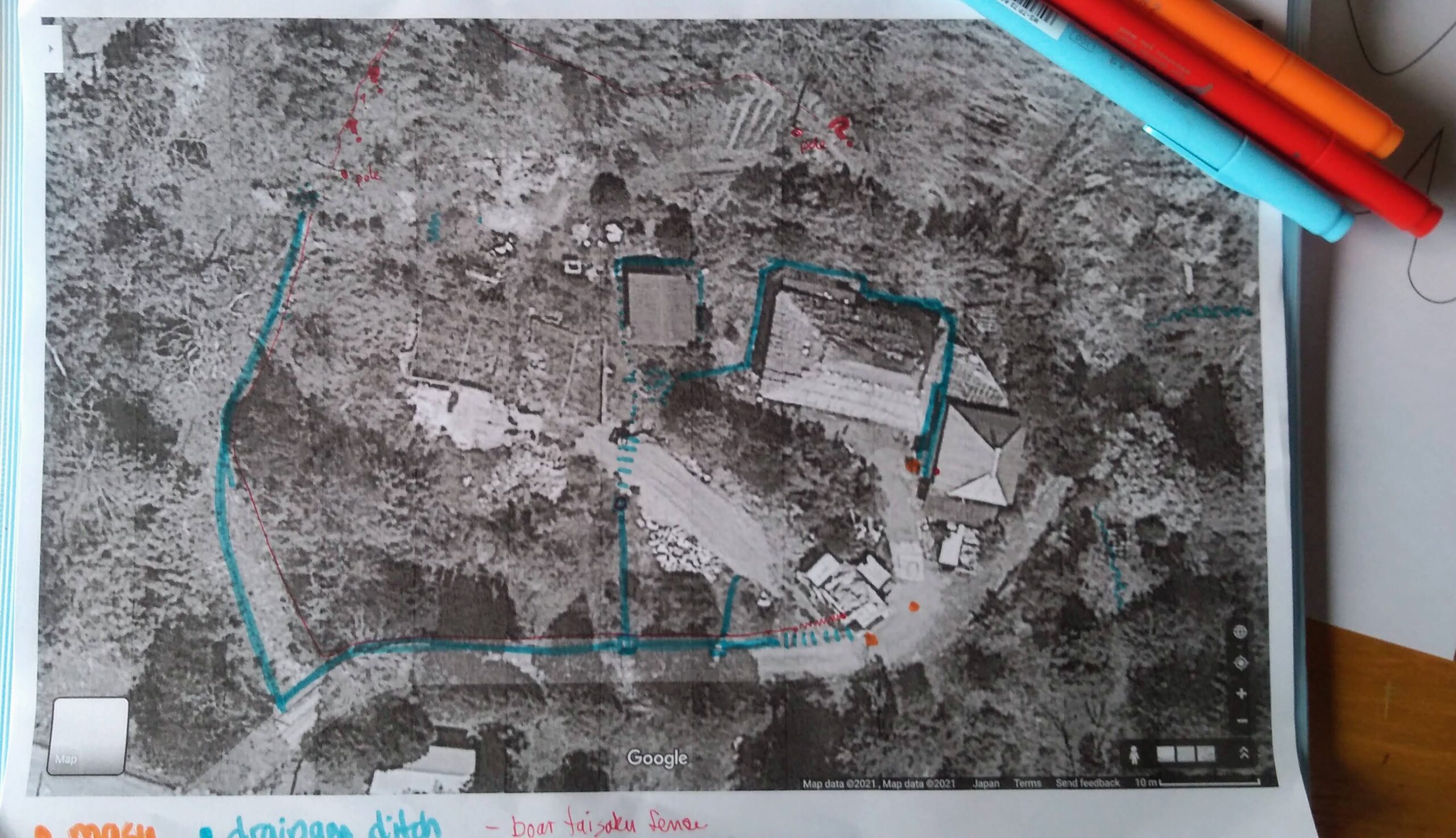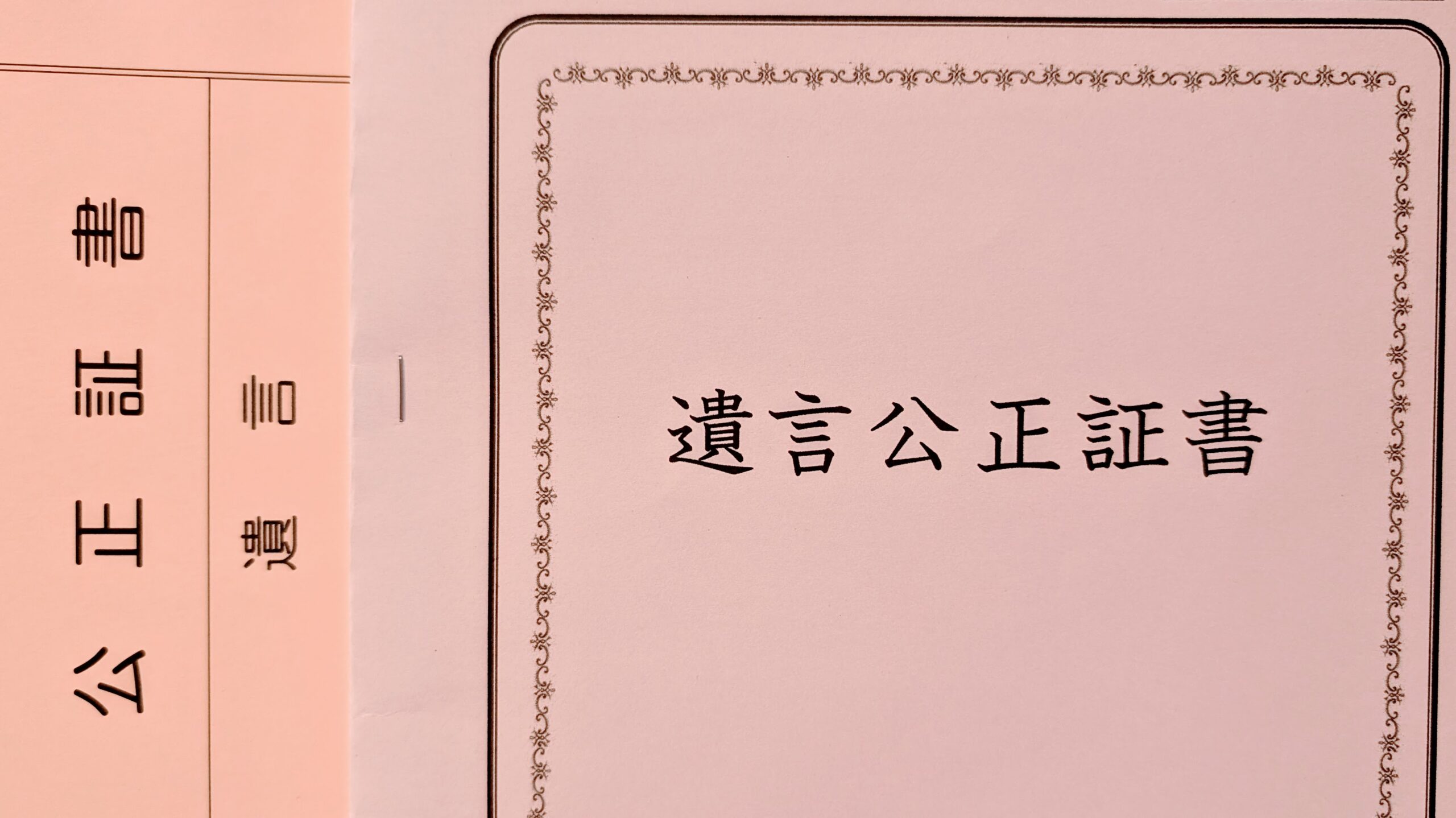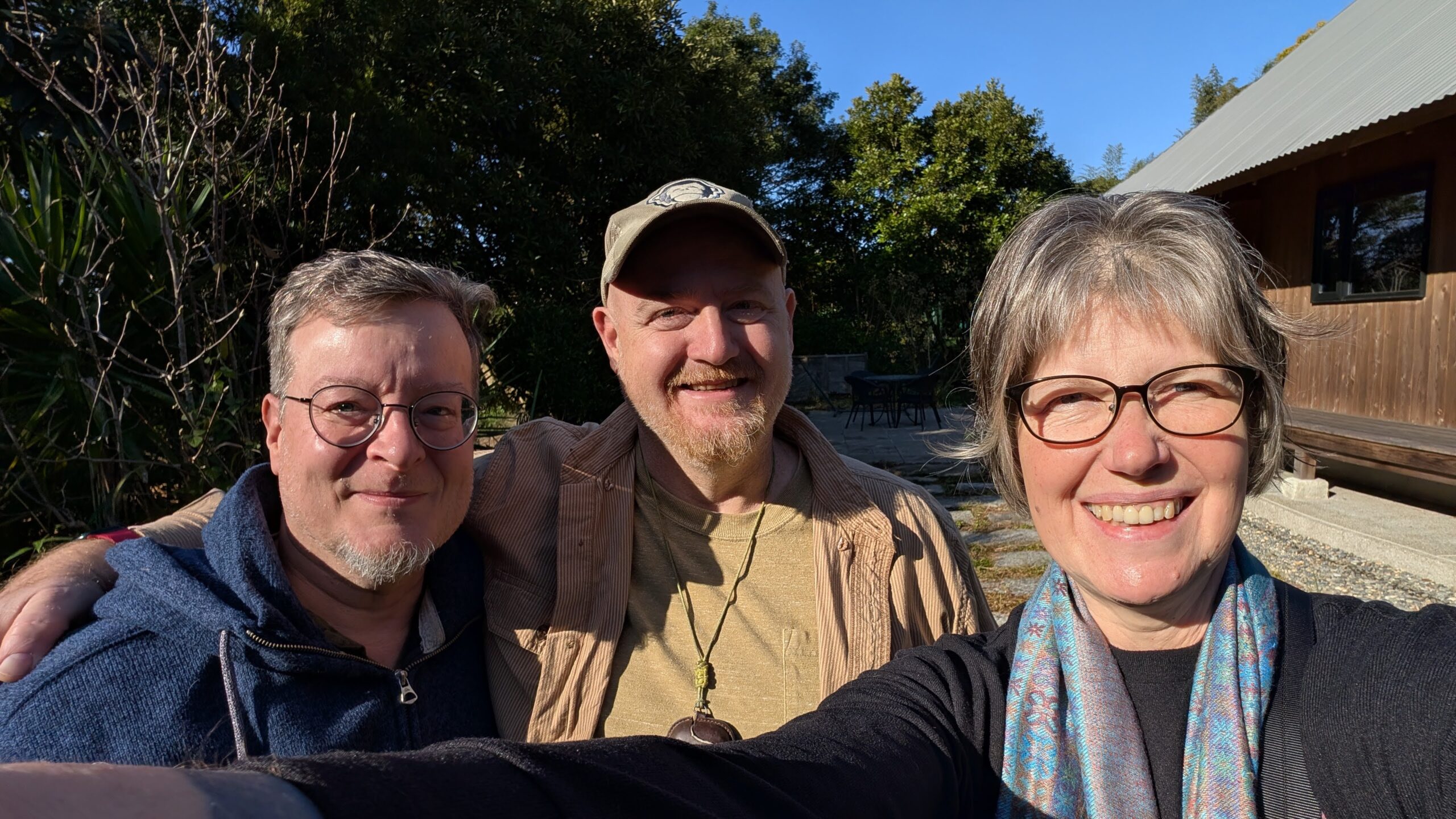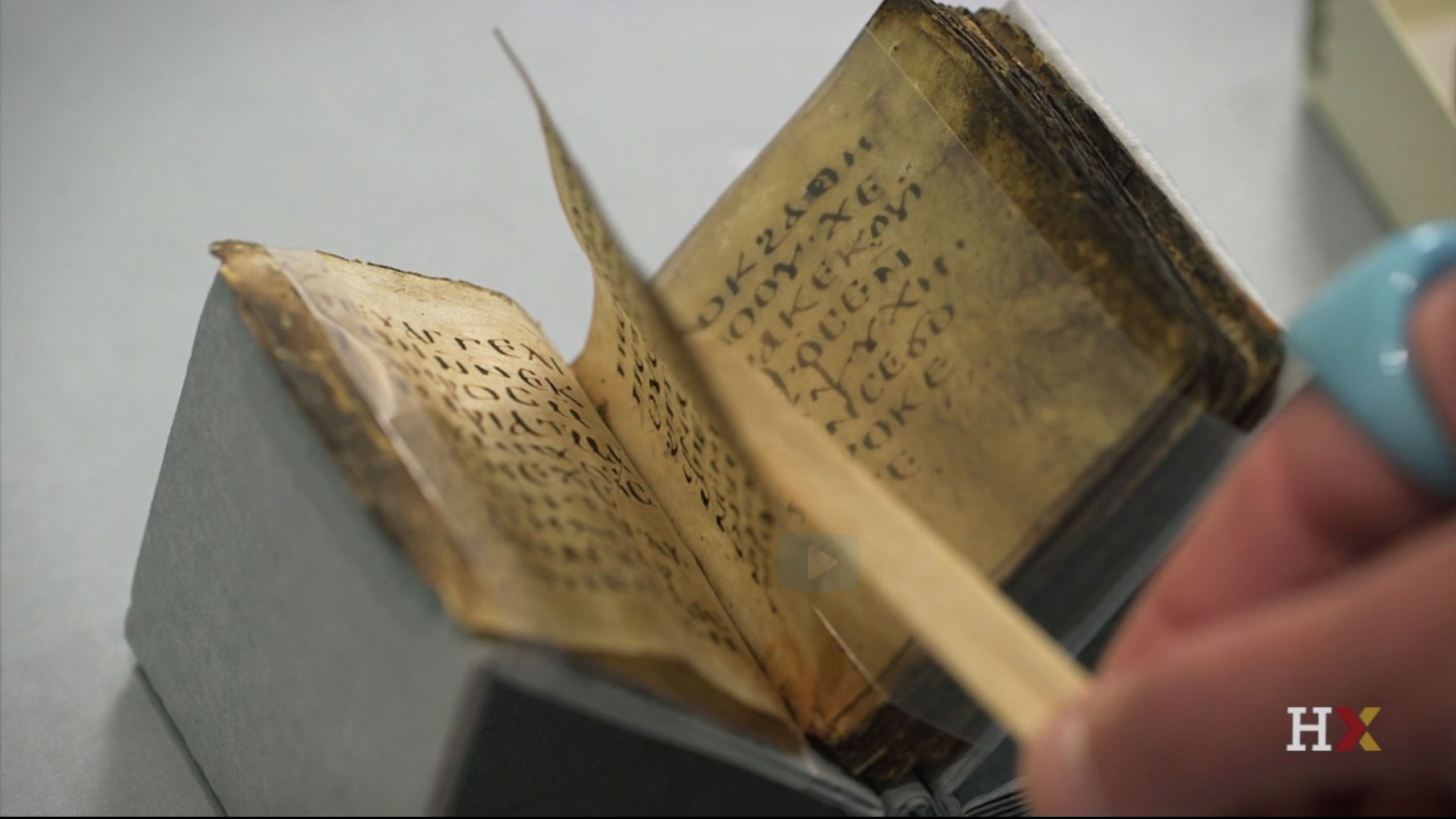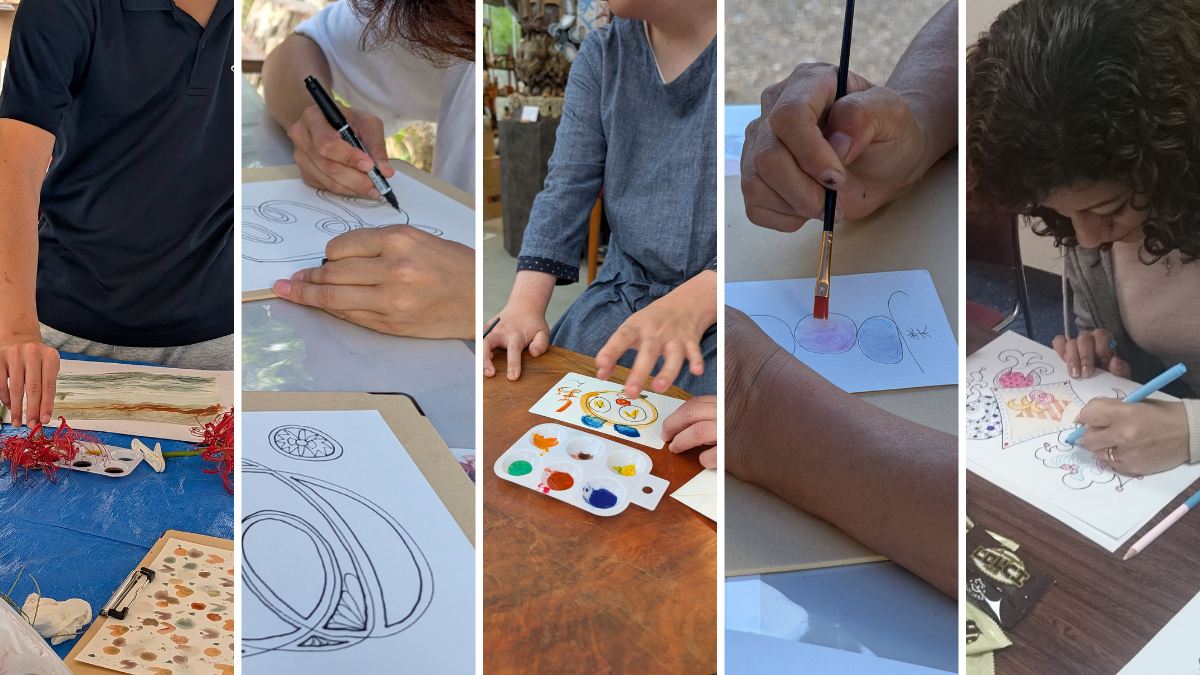555 is wet. There are springs and seeps through the land. Before we built the house, I drew a map of the drainage channels and wet spots that I knew about.
Two years later, each big downpour teaches me more about the way the water pools and drains. There are places where this might be a problem for the building we are making. I want to control the flow and keep my shoes from getting too muddy.
There are so many ways to manage water.
Most common way in Japan is to use cement. Turn your river into a giant culvert; put sea walls along the coast; and if you have soggy ground at home cover it over with a crust. Out of sight, out of mind. I can see the value of this approach in the utility area behind the house where we will have electrical equipment, but not much beyond that.
French drains. They are effective. Above is my small drain doing a good job. We built this in October when we realised water pooled on the wrong side of the ujiko at the bottom of the gabion. It is good to see that it’s working. And it’s also a little worrying because as much as this is strongly flowing, there is still a lot of water back there pooling closer to the house.

The roof runoff will be directed away from the house either into the ujiko drainage channels (by coving the whole area with cement at a slight angle) or a french drain that leads to the ujiko. For now, runoff falls straight to the ground and makes a literal drip line in the mud and gravel. My hardscaping research has given me some inspirations for the way the drip line will look on the other sides of the house.

And one way is to use the land and what grows there. This is the slope near the shed. It becomes an actively stream after a heavy rain. I don’t want to over-engineer it with hardscaping, so I will lay in some stepping stones and plant flowers and shrubs that can use the moisture. If I am clever, I can make it a no-mow area with plants that maintain themselves. I’d like that very much as long as I can also reduce mosquitoes. Ecosystems are challenging.
